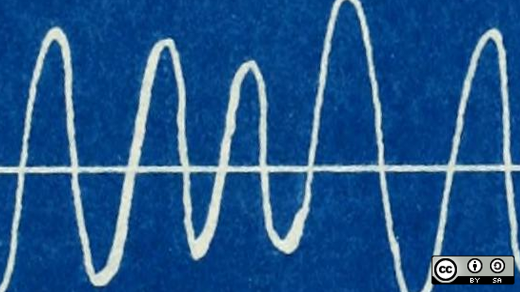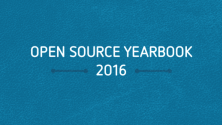Linux made quite a few headlines in 2016. Although 2016 wasn't the much-anticipated Year of Linux on the Desktop, it was still a big year for the open source movement's poster child. Let's take a look at 10 of the biggest Linux news stories from the past year.
1. Linux turns 25
They grow up so quickly. It's hard to believe that 25 years ago Linus Torvalds announced to the comp.os.minix Usenet group that he was "doing a (free) operating system (just a hobby, won't be big and professional like gnu) for 386(486) AT clones." Since 1991, Linux has grown beyond even Torvalds' dreams. It's not a stretch to say that Linux is everywhere. Corporations large and small use Linux, and it powers computers, mobile devices, and connected hardware. Critical infrastructure relies on the stability and flexibility of Linux.
Why, despite its humble beginnings and the opposition it's faced from certain corners of the technology world, did Linux not only survive but also thrive? Christopher Tozzi, writing at The VAR Guy website, suggests that Linux succeeded for four reasons: It adopted a decentralized approach to development, was pragmatic rather than ideological, the kernel was designed to be practical, and Linux managed to rally a community around itself.
2. Fedora 25 becomes the first major Linux distro to ship with Wayland enabled by default
As we reported in November 2016, Fedora 25 rolled out with Wayland as the default display protocol on compatible machines. Wayland was development as modern, simpler replacement for the X Window System. In a March 2016 blog post, Why Wayland Anyway?, developer Matthias Clasen outlined benefits of Wayland, including that it isolates clients from each other; it's a better fit for modern, compositing-based display system (i.e., it doesn't include unnecessary "baggage," such as core fonts or core rendering); and it will be a good foundation for enabling features that are hard to support under X (e.g., input transformation or smooth transitions between composited desktop and fullscreen clients).
Fedora 25 with Wayland received rave reviews from users. In an Ars Technica article, Fedora 25: With Wayland, Linux has never been easier (or more handsome), writer Scott Gilbertson says, "This is perhaps the biggest change to come in the Linux world since the move to systemd. However, unlike that systemd transition, the switch to Wayland was so seamless I had to logout and double check that I was in fact using Wayland." And in his an article on TechRepublic, Fedora 25: Bleeding edge and bloody brilliant, Jack Wallen says, "There are those in the community who believe it's still too early to be using Wayland as the default compositor protocol. However, after using Fedora 25 for a while, it's quite clear that Wayland is well beyond ready. GNOME on Wayland was much improved. Windows were smoother and faster to open and the stability of the desktop was a slight step ahead of X11." Keep an eye out for Wayland to make more headlines in 2017.
3. Microsoft cozies up to Linux
Over the past couple of years, Microsoft has been backtracking on its aggressive rhetoric against Linux and open source. In fact, the company has been actively and publicly embracing its one-time sworn enemy. But in 2016, the company further shocked the Linux and open source world with several moves. Microsoft joined the Linux Foundation as a Platinum member, a membership tier that includes companies such as Cisco, Fujitsu, IBM, and Intel. Other smaller—but more surprising—moves were making PowerShell and SQL Server 2016 available for Linux (however, only PowerShell is open source), and bringing the Bash shell to Windows 10.
These moves have been greeted with open arms, and with more than a bit of skepticism. On one hand, analysts anticipate Microsoft's platform to integrate and operate better with Linux and open source applications. On the other hand, many people in the open source community view Microsoft's coziness with Linux and open source as another step in Microsoft's embrace, extend, and extinguish strategy.
4. Munich makes noise about abandoning Linux
In 2004, the city of Munich in Germany made headlines by starting a project to replace Windows and Microsoft Office on thousands of PCs with a custom Linux distribution called LiMux, OpenOffice.org, and, later, LibreOffice. That experiment seems to be over, as Munich's government is debating a report that recommends moving back to Microsoft's products. The announcement was surprising because the city declared the shift to Linux and open source a success in 2013. Although most users haven't had a problem with the migration, various municipal departments are pushing to go back to using Windows and Microsoft Office. But it's not all bleak news for Linux in Munich. If the shift does happen, the city plans to use LiMux alongside Windows, and LiMux would continue to be updated.
5. Russia moves to embrace Linux
As Munich considers moving away from Linux, Russia is moving toward embracing Linux and open source. The Duma, Russia's parliament, drafted a law giving preference to open source software and requiring government agencies to justify purchases of proprietary solutions. A big part of this move is based around security concerns. Most of the country's digital infrastructure runs on software from US-based companies, such as Microsoft, Oracle, and IBM. The Russian government claims that the software from those companies poses security risks, such as hidden backdoors into the software. Although the public and private sectors in Russia are warm to open source, a few barriers must be overcome, such as a lack of local companies who can provide support, and few open source companies have offices in Russia.
6. Linux powers the world's fastest supercomputers
For years, Linux has been at the heart of the fastest, most powerful supercomputers on the planet. This trend continued in 2016 with Linux ruling the roost as the operating system of choice for makers of supercomputers. In the TOP500 2016rankings of high performance computers, Linux powers 497 of the 500 machines on the list. That means 99.4% of the fastest supercomputers use Linux as their software heart. The other three run IBM's AIX (a UNIX derivative), and the highest-ranking of those computers comes in at 281st place on the list.
7. Automotive Grade Linux heads toward becoming a de-facto standard
If Linux isn't already in your car, it will be soon. That's the idea behind the Linux Foundation's Automotive Grade Linux (AGL) project. Although Automotive Grade Linux has been kicking around for a few years, it picked up additional steam in 2016 when several technology companies, including Oracle, Qualcomm, and Texas Instruments, joined the project.
"The automotive industry needs a standard open operating system and framework to enable automakers and suppliers to quickly bring smartphone-like capabilities to the car," Dan Cauchy, the project's general manager, says in an early 2016 project update. The tech firms that joined the project along with a number of automakers are working to build a common, standard platform for controlling all aspects of a car's operations.
8. Popular Linux distribution Mythbuntu packs it in
The year 2016 saw the end of the line for one popular Linux distribution. The developers behind Mythbuntu, the backbone of the open source MythTV digital video recorder, decided to discontinue the project. Thomas Mashos, a coder with the project, says a lack of developers led to the decision. The team went from 10 developers down to 2, which caused delays to updates and new Mythbuntu releases.
MythTV isn't dead, however. The core software is still available, and the Mythbuntu team suggests that instead of Mythbuntu, users install a distribution such as Xubuntu. Users can install the MythTV packages using the Mythbuntu Personal Package Archive, which will continue to contain MythTV updates.
9. KDE turns 20
The Kool Desktop Environment—more commonly known as KDE—turned 20 years old. In his October 1996 announcement, Matthias Ettrich wrote, "The idea is NOT to create a GUI for the complete UNIX-system or the System-Administrator. ... The idea is to create a GUI for an ENDUSER. Somebody who wants to browse the web with Linux, write some letters and play some nice games." To learn more about the history of the KDE project, visit timeline.kde.org. Also check out David Both's list of 9 reasons to use KDE.
10. Linux kernel bug threatens 1.4 billion Android devices
You're probably wondering how a bug in the Linux kernel could be a problem for Android. Well, Android is built on top of version 3.6 of the kernel. The bug, an issue with the Transport Control Protocol in that version of the kernel, put 80% of Android devices (about 1.4 billion of them) at risk. Although it wasn't one of the most severe Android security bugs, it left Android devices open to spying when they connected to the Internet. Still, researchers said the flaw was simple enough for anyone with minor technical skills to exploit. Linux developers quickly patched the bug, and the fix was passed to mobile carriers and handset makers to pass along to their customers.
2017 predictions
What Linux and open source projects and news do you predict being big stories in 2017? Let us know about them in the comments, or send a story proposal to open@opensource.com.





3 Comments